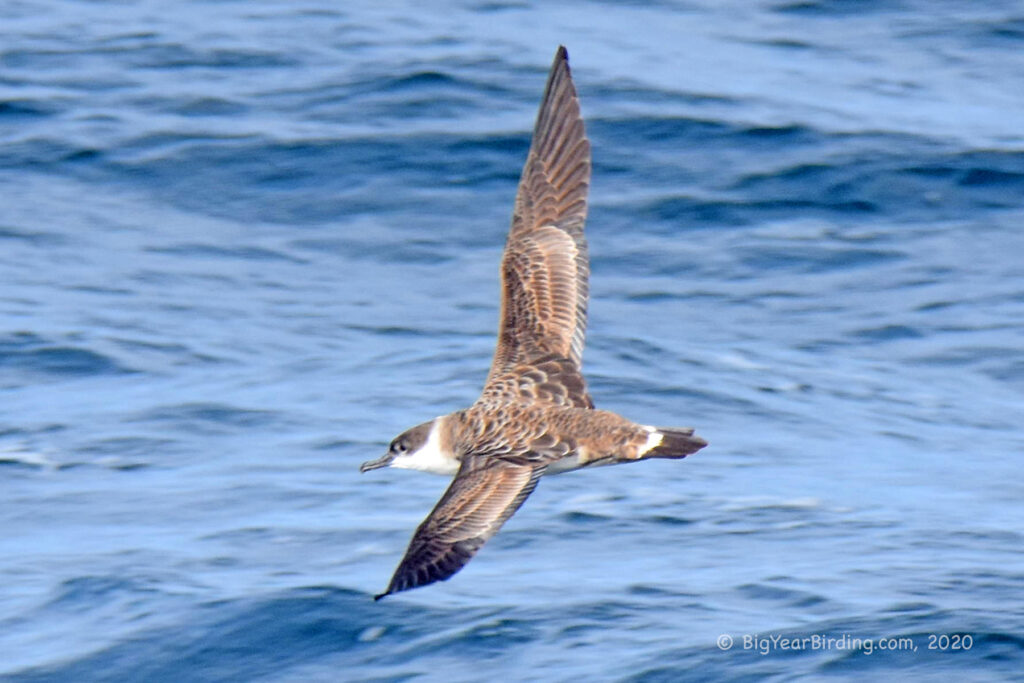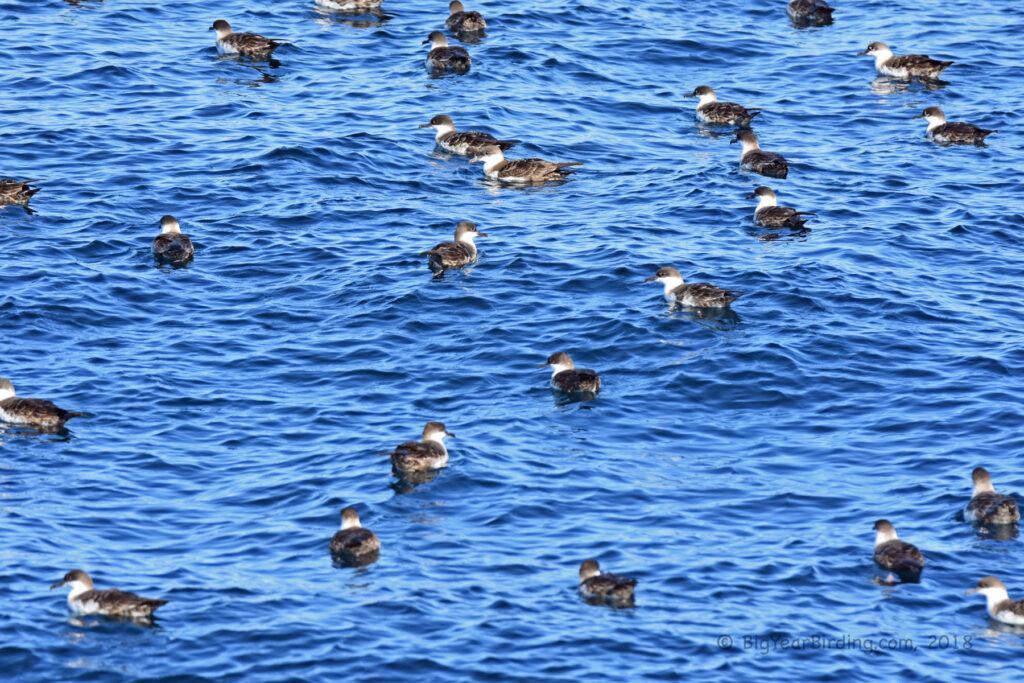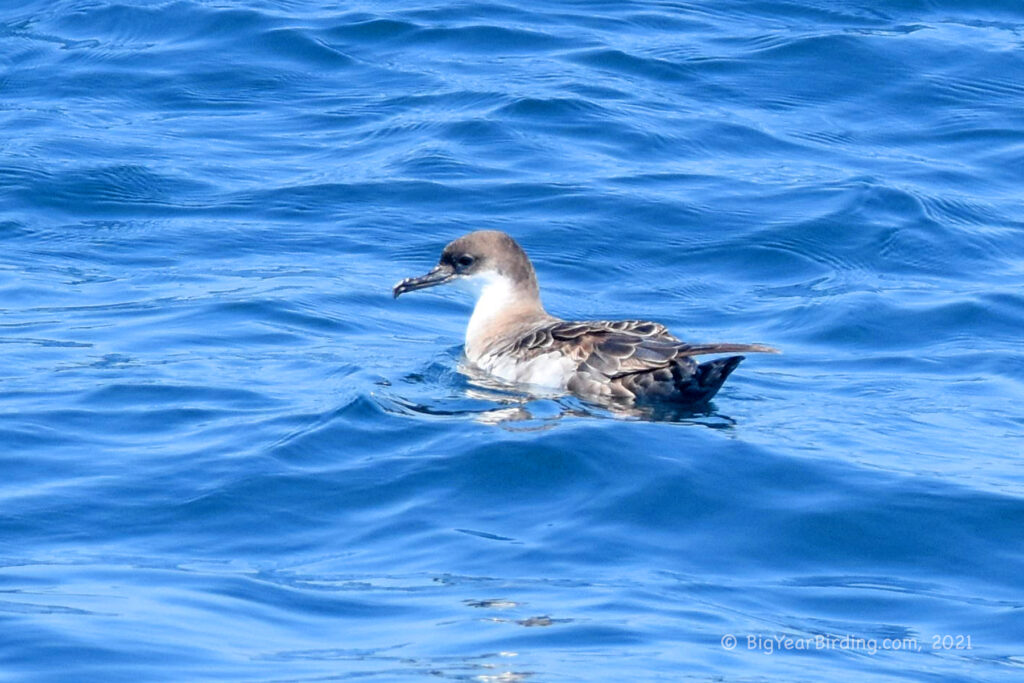
The Great Shearwater (Ardenna gravis) is a medium-sized seabird with a wingspan of around 100cm (39 inches) and a body length of approximately 46cm (18 inches). They weigh around 650-900g (23-32 ounces). This species of shearwater has a dark brown head, back, and upperwings with a white belly and underwings. Their distinctive M-shaped pattern on the upperwing helps differentiate them from other shearwater species. The bill is long and slender, with a dark upper mandible and a pale lower mandible.

The Great Shearwater breeds on islands in the South Atlantic, such as Tristan da Cunha, Gough Island, and Inaccessible Island, and in the North Atlantic, such as the Azores and Bermuda. During the breeding season, they are found on cliffs, burrows, and under vegetation. In the winter months, they migrate to the North Atlantic, where they can be found off the coast of the eastern United States, Canada, and northern Europe. They can also be found in the western Atlantic off the coast of Brazil and Argentina.
The Great Shearwater feeds on small fish, squid, and crustaceans, which they catch by diving into the water. They are also known to scavenge on fish waste from fishing boats. Their foraging behavior can lead them far from land, and they are known to travel long distances in search of food. They are often seen in large flocks, which can number in the thousands, and can be attracted to fishing boats by chum.
Breeding colonies of Great Shearwaters can be found on remote islands, making them difficult to study. However, researchers have used satellite tracking to follow their migration patterns and better understand their behavior. Scientists have found that Great Shearwaters can travel up to 13,000 km (8,077 miles) in a single migration, and they are capable of traveling at speeds of up to 112 km/h (70 mph). They are also known for their ability to navigate using the earth’s magnetic field.

In conclusion, the Great Shearwater is a medium-sized seabird with a distinctive M-shaped pattern on the upperwing, a long and slender bill, and a dark brown head, back, and upperwings. They breed on islands in the South Atlantic and North Atlantic and migrate to the North Atlantic in the winter months, where they can be found off the coast of the eastern United States, Canada, and northern Europe. They feed on small fish, squid, and crustaceans and are known to scavenge on fish waste from fishing boats. Great Shearwaters are difficult to study, but researchers have used satellite tracking to follow their migration patterns and better understand their behavior.

